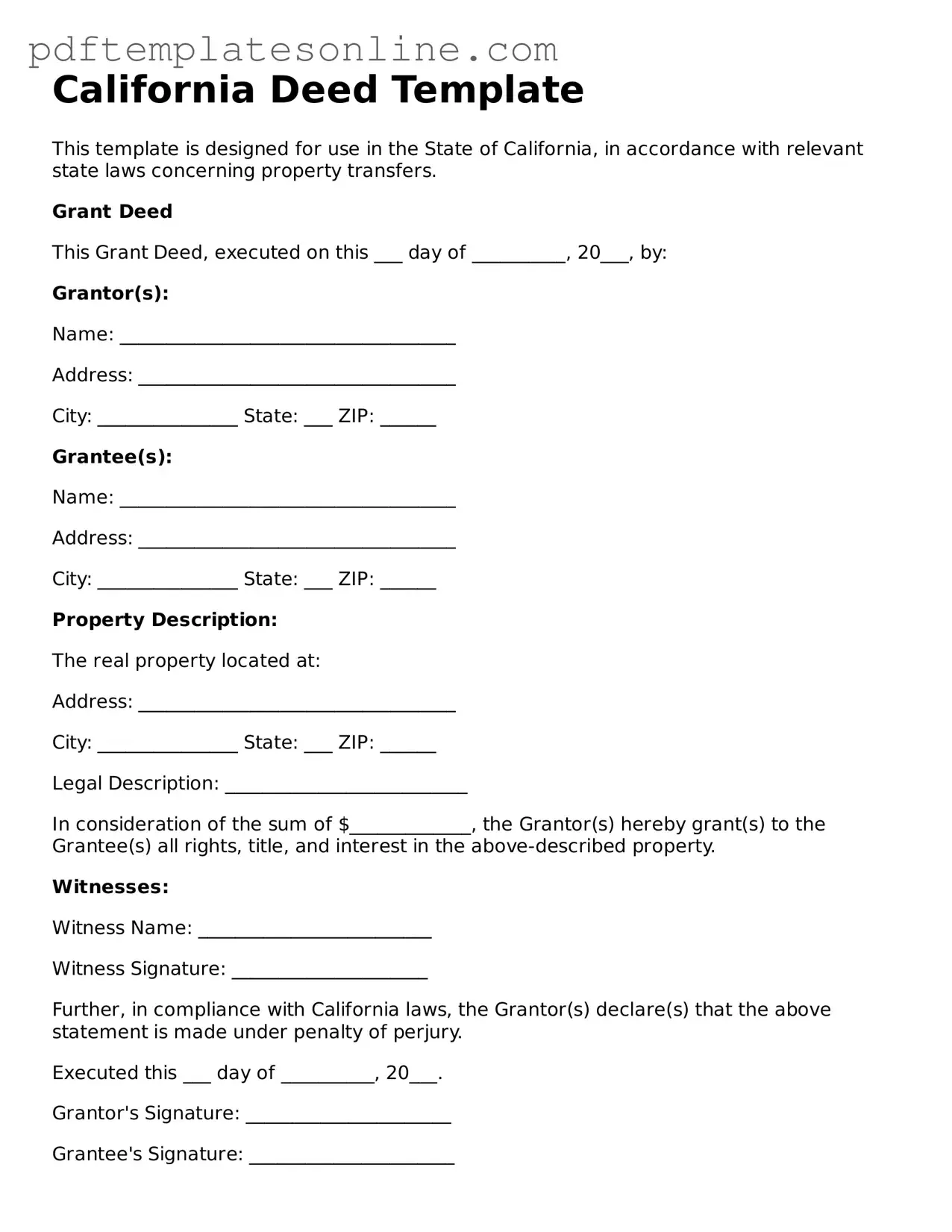Official California Deed Document
A California Deed form is a legal document used to transfer ownership of real estate from one party to another. This form serves as a vital record, ensuring that property rights are clearly defined and protected. Understanding its components and proper usage is essential for anyone involved in real estate transactions in California.
Access Deed Editor Now
